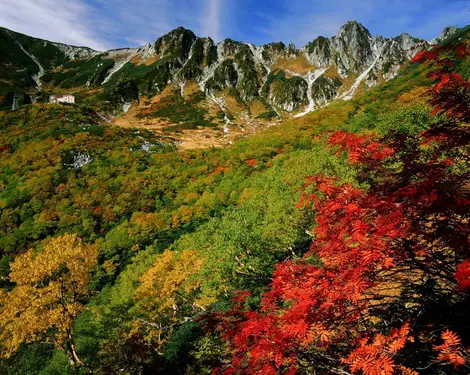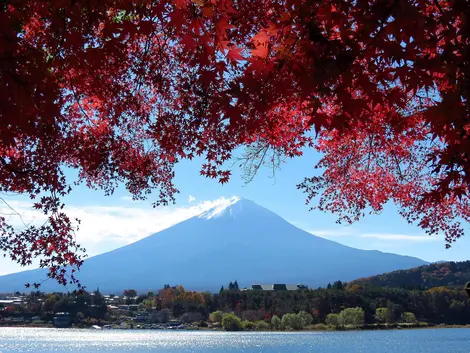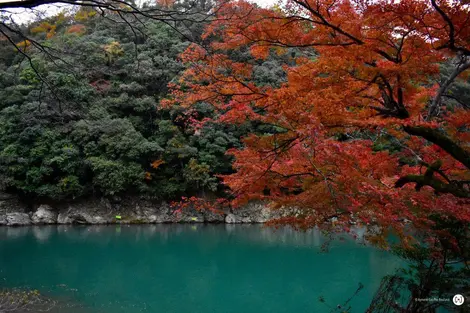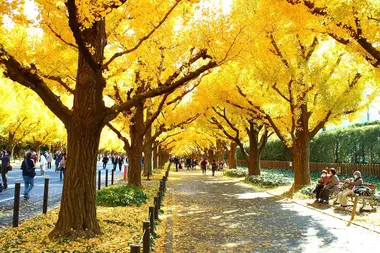Kōyō, travel in Japan during fall 紅葉
Kōyō, the alter-ego of hanami in fall
The beauty of the colors with which the trees are adorned in autumn is ephemeral, the Japanese have made it a feast of the contemplation of time passing: the momijigari, the kōyō hunt, the blushing leaves. One of the most beautiful seasons to travel to Japan and admire its beauties under a red-orange light!
Kōyō, the colors of autumn
The phenomenon is quite natural: with the autumn temperatures and the shortening of the days, the chlorophyll present in the leaves of trees dries up, and their color changes from green to red and orange, before these leaves finish by falling.
From this natural phenomenon, called kōyō (literally " red leaf " in Japanese), Japan drew a very particular feeling, a moment of contemplation which refers as much to Buddhist spirituality (because the glow of the leaves reminds us that life is ephemeral) than the beliefs of Shintoism (for which nature is inhabited by divine forces which manifest themselves to men).
- Read also : Shintoism, belief in nature and its strengths
It was from the Heian period (794-1185), marked by the designation of Kyoto as the imperial capital) that the Japanese aristocracy prided itself on kōyō. The contemplation of the colors of autumn then becomes a popular hobby, and even a quest : we begin to speak of momijigari , literally "the hunt for red leaves", to designate this time of the year loved by aesthetes, who organize excursions in the forest in search of the famous foliage, embellished with chic picnics and poetry declamation.
The importance of kōyō in Japan
The momijigari has survived the centuries, and today it is a moment awaited by many Japanese, kept in suspense by weather programs which indicate to the day the best time to contemplate the autumn leaves depending on the region. The kōyō season begins on the island of Hokkaidō (Sapporo) in mid-September, and gradually descends towards the south of the archipelago, ending its course on the island of Kyushu (Fukuoka, Kagoshima) in December. In Kanto and Kansai, the high season for kōyō generally occurs from the end of October to the end of November, but this of course varies from year to year.
As an embroidered motif on a kimono, painted on a screen or a lacquer object, accompanying dishes placed on a plate or giving their shape to cakes: in autumn, red and gold leaves are everywhere. And the Japanese generally take a few days (or even more), with family or friends, to carry out this "hunt" for beauty and the ephemeral. Certain areas, such as the temples and gardens of Kyoto (Kōdaiji , Chion-in , Arashiyama) and the surroundings of Tokyo are particularly popular. But there are many enthusiasts who jealously guard their address books… The Kōyō can nevertheless be enjoyed at any street corner, at the sight of the red maple in a simple garden, for example.
In the Japanese calendar, this colorful autumn is as important as the celebration of spring hanami , the contemplation of freshly bloomed sakura. But the star is no longer the cherry blossom: it is mainly gingko and maple. The first (also a symbol of Tokyo) offers flamboyant yellow leaves, while those of the second go from yellow to orange and then to intense red. But supporting roles also have their place: rowan, larch, beech or birch also participate in the magic of autumn.
Where to admire kōyō in Japan?
In Kyoto - which is one of the privileged cities to enjoy kōyō - the easiest way to enjoy beautiful glowing panoramas is to visit the temples and gardens.
We particularly recommend Tofuku-ji and its hundreds of maples, Kiyomizu-dera and Kodai-ji for their sublime autumn illuminations. Do not miss to go to Arashiyama to enjoy the colorful hills for a stroll along the river.
In Tokyo, the large Yoyogi and Shinjuku Gyoen parks are excellent spots. Lovers of golden ginkgoes can discover Icho Namiki Avenue, located not far from the Meiji-Jingu stadium and planted with hundreds of ginkgo biloba.
Nikko, as well as Mount Takao, are also privileged places to admire the kōyō in sumptuous natural settings.
For further :























